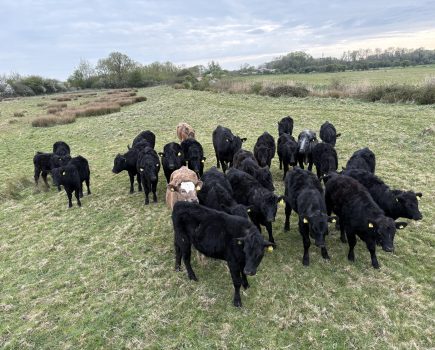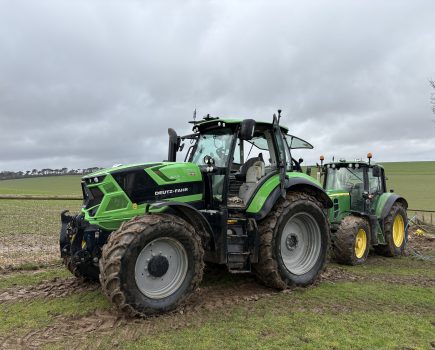Managing the growing impact of wind on UK farming.
The UK has long experienced windy weather, but in recent years farmers have been subject to a troubling trend: an increase in both the frequency and intensity of wind events. According to the Met Office, average wind speeds have risen by 1.5% over the past two decades, with gusts over 60 mph becoming more common.
We have all seen the effects of strong ‘Santa Ana winds’ in Los Angeles which have been linked to a greater spread and intensity of wildfires as the dry, powerful gusts rapidly fan flames and hinder firefighting efforts. This highlights the broader impact of extreme winds, with the UK now facing its own growing wind-related challenges that demand urgent attention and innovative solutions.
The Impact of Increasing winds on agriculture
Wind can profoundly affect farming operations, from soil health to crop yields. One of the most visible consequences is soil erosion. High winds can strip valuable topsoil from fields, particularly during dry spells or over bare ground.
The drying effect of wind compounds the problem. Prolonged exposure to strong winds dries soil, reducing its ability to support healthy plant growth. This is particularly concerning in regions like the South East, where lighter, sandy soils are more vulnerable to drying out. As a result, crops can struggle to establish and grow, leading to reduced yields and higher input costs for irrigation and soil amendments.
Wind damage isn’t limited to the soil; the crops themselves are at risk. For fruit growers, wind can bruise delicate produce, cause premature fruit drop, create tree damage and reduce pollination.
Adapting to a windier future
While we cannot control the weather, farmers can take proactive steps to mitigate the impact of wind on their operations. The following strategies are proving effective across the UK and beyond.
Windbreaks
Windbreaks, such as hedgerows, are a time-tested method for reducing wind speed. These barriers can decrease wind velocity by up to 50%, protecting both soil and crops from erosion and damage. In addition to their practical benefits, windbreaks enhance biodiversity by providing habitat for pollinators and beneficial predators. The Woodland Trust offers grants for farmers looking to establish hedgerows or tree lines, making this a cost-effective and environmentally friendly solution.
Cover crops
Planting cover crops, such as clover, rye or vetch, is another way to combat wind erosion. These crops protect the soil surface, reducing the risk of particles being lifted by strong gusts. Additionally, cover crops improve soil structure, enhance water retention and add organic matter, making the soil more resilient to both wind and drought.
Precision irrigation
To counteract the drying effects of wind, farmers can use precision irrigation techniques to maintain optimal soil moisture levels. Drip irrigation and other targeted methods deliver water directly to the root zone, minimising waste and ensuring that crops receive the hydration they need, even during dry, windy conditions.
A call for collaboration
Adapting to increased wind requires more than individual effort. Policymakers, researchers and farming organisations must work together to provide farmers with the tools, knowledge, and financial support needed to implement effective solutions. Government schemes such as the Environmental Land Management scheme (ELMS) offer incentives for practices like planting hedgerows and adopting cover crops, aligning agricultural resilience with broader environmental goals.
Looking ahead
As the UK continues to experience the effects of a changing climate, wind will remain a formidable challenge for farmers. However, with thoughtful planning and adaptive practices, it is possible to protect our soils, safeguard our crops and ensure the long-term sustainability of farming in the South East and beyond. By embracing windbreaks, cover crops and other innovations, farmers can not only weather the storm but thrive in the face of it.
For more like this, sign up for the FREE South East Farmer e-newsletter here and receive all the latest farming news, reviews and insight straight to your inbox.







